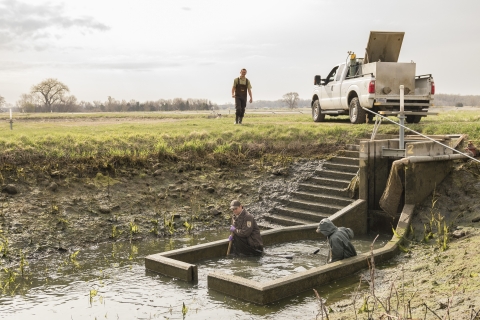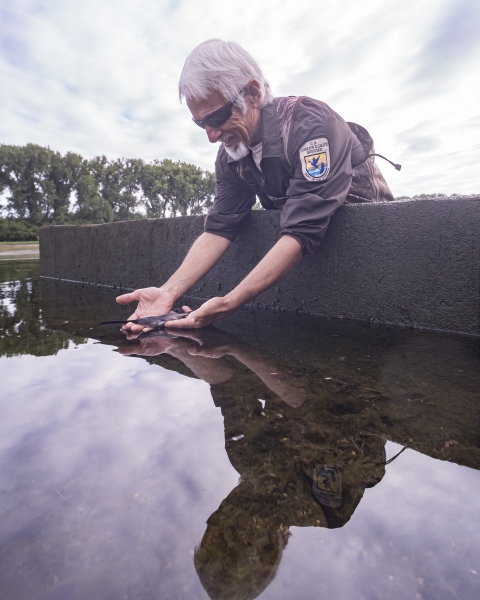About Us
Since 1871 the National Fish Hatchery system has been at work improving recreational fishing and restoring aquatic species that are in decline, at risk, and are important to the health of our aquatic systems. Across the country the network of National Fish Hatcheries work with states and tribes to conserve, restore, and enhance the fish and aquatic resources of America for future generations.
Our facility has produced over five billion fish since 1961. We have worked with nearly 20 different species and expect to experiment with more as demands change in the waterways of the northern plains. Fish produced here end up all over the upper Midwest, and beyond. Our facility features a free public aquarium, five fish production buildings, and 32 fish rearing ponds.
Our Mission
Since 1871, National Fish Hatcheries have been applying science-based approaches to conservation challenges. We work with our partners and engage the public to conserve, restore, and enhance fish and other aquatic resources for the continuing benefit of the American people. Conservation is at the heart of what we do, and we recognize that we do this work for the American people–both the present generation who benefit today and future generations who will inherit our legacy of conserving America’s aquatic resources.
We aim to help aquatic species in need with recovery while also providing a boost to sportfish populations. Educating the public about local aquatic species is another feature of our work. From producing endangered pallid sturgeon to raising bluegill for a fishing pond, we enjoy working hard for the American people and the wildlife that calls this great country home.
Our History
Our hatchery was founded in 1961, shortly after the nearby Gavins Point Dam became operational on the Missouri River. In those early days, the hatchery primarily produced sportfish for the river, the newly-created reservoir and local waters. In addition to the hatchery facilities, our aquarium has been there since the beginning, serving as a showcase for local aquatic species. Well over 1,000,000 people have visited it over the years.






